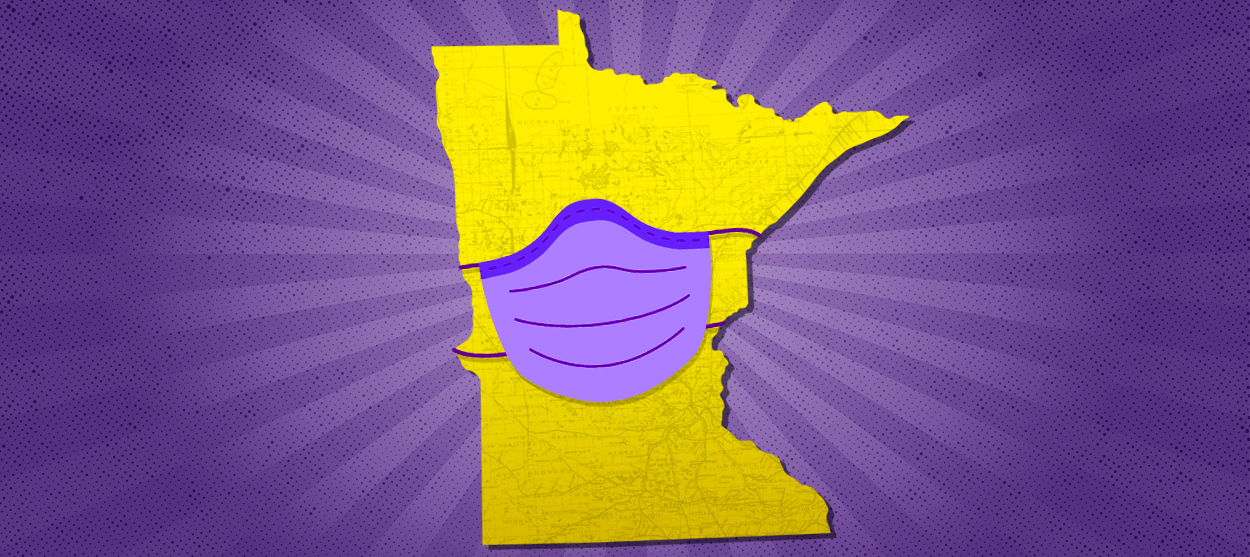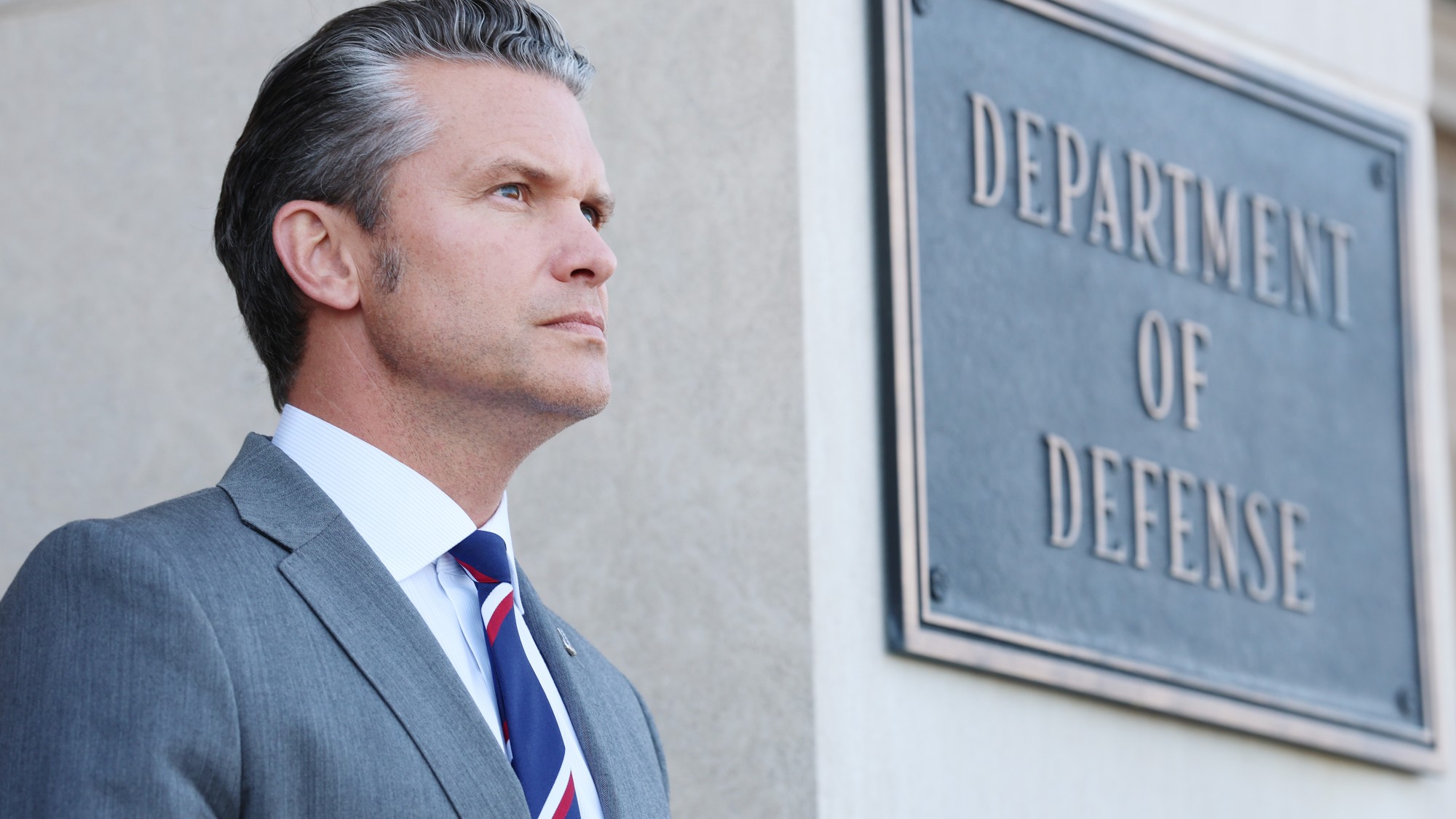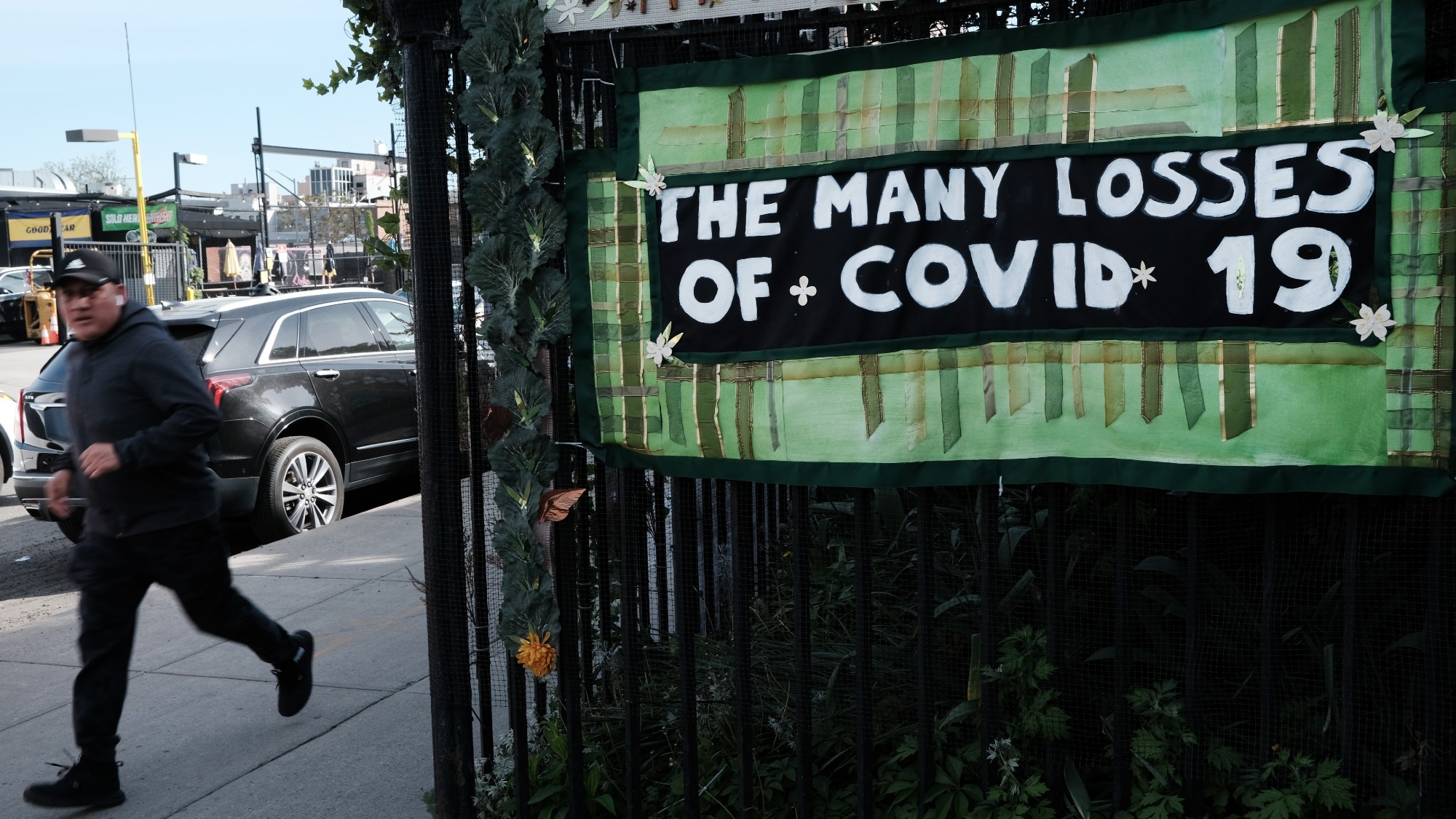Why Minnesota's coronavirus response is different
The north paves its own path


On Wednesday afternoon, my family gathered in our living room to hear Minnesota Gov. Tim Walz (D) announce the next phase in our state's response to the novel coronavirus. Walz has issued nearly two dozen executive orders pertaining to COVID-19, but this was the big one: a state-wide stay-at-home order running from March 27 through April 10.
I will grant from the outset that Minnesota, as a state, is a little self-obsessed. (Woe betide the coastal journalist who runs afoul of us.) So perhaps there is some of that Minnesota bias in play when I say: The plan Walz outlined is unique — in a good a way. Of course, it inevitably has a lot in common with what other states are doing. Recommendations of social distancing, for example, are universal. But there are ways the Minnesota proposal is different, and in these uncharted waters, they're worth a closer look.
I'm not sure what I expected when we turned on our radio, but a message substantially devoted to explanations of statistical modeling wasn't it. That is, however, what Walz delivered. Minnesota has 235 ICU beds, Walz said, and if we changed nothing about our regular routines, we'd fill every one with coronavirus patients within six weeks. By nine weeks, the models from the Minnesota Department of Health and the University of Minnesota predict, we'd reach an epidemic peak of about 2.4 million infections, 60,000 hospitalizations, and 6,000 people in need of an ICU bed — a need current capacity obviously couldn't meet. The death toll would climb accordingly.
The Week
Escape your echo chamber. Get the facts behind the news, plus analysis from multiple perspectives.

Sign up for The Week's Free Newsletters
From our morning news briefing to a weekly Good News Newsletter, get the best of The Week delivered directly to your inbox.
From our morning news briefing to a weekly Good News Newsletter, get the best of The Week delivered directly to your inbox.
That dire prediction is already off the table, because we've already done some mitigation. Cellphone data shows Minnesotans have reduced our movement by nearly 50 percent, better than many states have achieved. But also off the table is successfully staving off a large peak of infections. "It's too late to flatten the curve as we talked about," Walz said, because large-scale testing was not available soon enough to pursue a less disruptive response, so the goal now "is to move the infection rate out."
The stay-at-home order Walz debuted is designed to that end. If the statistical models prove correct, those 235 ICU beds won't be full until the 11-week mark, and the infection peak will come in 14 weeks rather than nine. With the extra time, local stadiums and hotels will be converted to temporary hospitals to dramatically increase ICU capacity. "The attempt here is to strike a proper balance of making sure our economy can function; we protect the most vulnerable; [and] we slow the [infection] rate to buy us time and build out our capacity to deal with this," said Walz. So it's two weeks of the stay-at-home order, followed by three weeks of social distancing, followed by ongoing distancing for vulnerable populations.
That timeline could change, true, but the fact that we have it at all is a key distinction. Comparable orders in many states either have no expiration date (e.g. California) or have an expiration date much further out (e.g. Delaware, which started its shelter-in-place earlier and intends to continue until May 15). Minnesota's plan has not only a short period for the most stringent limits but also an end in sight for the lesser distancing measures to follow.
Also distinct is the promise of concrete action while the order is in place. The whole reason this is a major crisis is that though its still-to-be-determined fatality rate is pretty low, COVID-19's novelty and transmissibility let it rapidly overload our hospital capacity, resulting in deaths that would be preventable with adequate health-care resources. So, as far as I can tell, there are two ways to prevent deaths until a vaccine is available: reduce infections or increase medical care. (Mass testing would help with both — see the enormously compelling evidence from Germany — as well as with economic turmoil, as it could allow those identified as recovered and therefore immune to move about normally without endangering themselves or others.)
A free daily email with the biggest news stories of the day – and the best features from TheWeek.com
Distancing and stay-at-home orders reduce infections, but those who warn we can't do this forever are correct. As adamantly as I support distancing measures and reject the idea that vulnerable populations must die for the greater (economic) good, I'm as worried as any about the economic and social consequences of a national shutdown.
But if we can expand our hospital capacity before the pandemic peaks, we have a shot at getting back to something approximating normalcy relatively quickly without paying an unacceptable human cost. Minnesota, far from coastal ports and with a low caseload so far, can do this before the worst arrives in a way places hit earlier and harder could not. States in similar circumstances can copy this plan and maybe even extend help to neighboring states in more acute crises of care.
The third valuable difference I see between Minnesota's order and others is simply that it is not quite as strict as shelter-in-place commands. In other states including California, for instance, childcare was shut down for all but parents in essential roles like health care. For working parents like me, the fact that childcare is considered an essential service in Minnesota makes a world of difference.
This is a strange and unfamiliar time. It is difficult to judge what is prudent and what is merely expedient, what is compassionate and what is naïve. Our best-intended reckonings may prove wrong. But from this vantage, anyway, the Minnesota plan seems like a sensible third way between options risking over- and underreaction. It's exactly the distinction we Minnesotans would expect from ourselves.
Bonnie Kristian was a deputy editor and acting editor-in-chief of TheWeek.com. She is a columnist at Christianity Today and author of Untrustworthy: The Knowledge Crisis Breaking Our Brains, Polluting Our Politics, and Corrupting Christian Community (forthcoming 2022) and A Flexible Faith: Rethinking What It Means to Follow Jesus Today (2018). Her writing has also appeared at Time Magazine, CNN, USA Today, Newsweek, the Los Angeles Times, and The American Conservative, among other outlets.
-
 How the War Department became the Department of Defense – and back again
How the War Department became the Department of Defense – and back againIn Depth In 1947 President Harry Truman restructured the US military establishment, breaking with naming tradition
-
 Codeword: December 8, 2025
Codeword: December 8, 2025The daily codeword puzzle from The Week
-
 Sudoku hard: December 8, 2025
Sudoku hard: December 8, 2025The daily hard sudoku puzzle from The Week
-
 Has Zohran Mamdani shown the Democrats how to win again?
Has Zohran Mamdani shown the Democrats how to win again?Today’s Big Question New York City mayoral election touted as victory for left-wing populists but moderate centrist wins elsewhere present more complex path for Democratic Party
-
 Millions turn out for anti-Trump ‘No Kings’ rallies
Millions turn out for anti-Trump ‘No Kings’ ralliesSpeed Read An estimated 7 million people participated, 2 million more than at the first ‘No Kings’ protest in June
-
 Ghislaine Maxwell: angling for a Trump pardon
Ghislaine Maxwell: angling for a Trump pardonTalking Point Convicted sex trafficker's testimony could shed new light on president's links to Jeffrey Epstein
-
 The last words and final moments of 40 presidents
The last words and final moments of 40 presidentsThe Explainer Some are eloquent quotes worthy of the holders of the highest office in the nation, and others... aren't
-
 The JFK files: the truth at last?
The JFK files: the truth at last?In The Spotlight More than 64,000 previously classified documents relating the 1963 assassination of John F. Kennedy have been released by the Trump administration
-
 'There is a certain kind of strength in refusing to concede error'
'There is a certain kind of strength in refusing to concede error'instant opinion 'Opinion, comment and editorials of the day'
-
 'Most Americans have never heard of the Office of Net Assessment'
'Most Americans have never heard of the Office of Net Assessment'Instant Opinion Opinion, comment and editorials of the day
-
 'What Americans really need is access to safer products'
'What Americans really need is access to safer products'Instant Opinion Opinion, comment and editorials of the day
